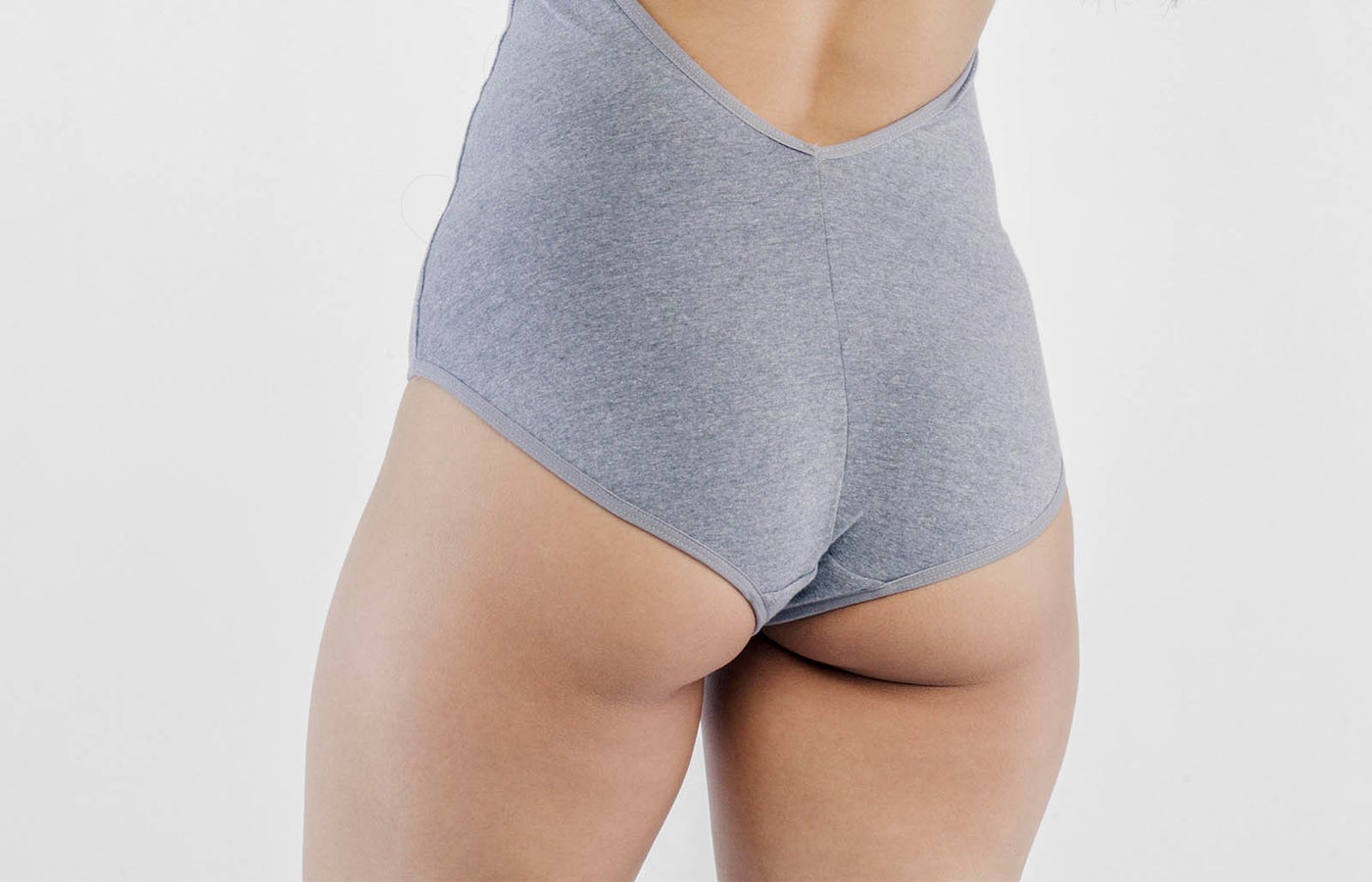BEFORE & AFTER PHOTOS
SPONSORED
Smart Lipo before and after photo courtesy of Dr. Mark Edward Hennessy, physician in Houston, TX. Results may vary.
Smart Lipo before and after photo courtesy of Dr. Mark Edward Hennessy, physician in Houston, TX. Results may vary.
Smart Lipo before and after photo courtesy of Dr. Mark Edward Hennessy, physician in Houston, TX. Results may vary.
Smart Lipo before and after photo courtesy of Dr. Mark Edward Hennessy, physician in Houston, TX. Results may vary.
Smart Lipo Triplex is an FDA-cleared laser liposuction procedure that’s used for fat removal and body contouring.
Manufactured by Cynosure, the device uses laser energy heat to liquefy unwanted pockets of stubborn fat, which makes it easier to suction out through a tiny incision.
Among the benefits of Smart Lipo: it triggers a natural healing response that stimulates new elastin and collagen production. According to Dr. Laurie Casas, a board-certified plastic surgeon in Chicago, “we often see skin tightening from collagen and elastin production following the thermal injury to the fat cells and overlying skin.”
A form of laser-assisted lipolysis, Smart Lipo “is not a fad procedure,” says Dr. David E. Berman, a board-certified plastic surgeon in Sterling, Virginia. “It’s been performed in the United States since 2007 and has a very high patient satisfaction rate.”
Pros
- Smart Lipo offers significant fat removal with a single procedure, unlike nonsurgical fat reduction treatment options (which typically target a smaller amount of fat and require multiple sessions over several weeks).
- For most patients, this type of cosmetic surgery is performed under local anesthesia, which is less expensive than general anesthesia and comes with fewer risks.
- Melting fat deposits with heat prior to suctioning “should allow a smoother result and some skin tightening,” explains Dr. Berman. He says that there’s less chance of unevenness after Smart Lipo than traditional liposuction, though “this depends on the skill of the plastic surgeon.”
- Liquifying unwanted fat prior to removal can reduce pain and minimize trauma to the surrounding tissues, potentially making the recovery period shorter and easier than with traditional liposuction.
- Compared to traditional liposuction surgery, there may be less bruising with this procedure. That's “because one of the wavelengths emitted from the laser coagulates small blood vessels,” Dr. Berman notes.
Cons
- Like all forms of liposuction, Smart Lipo treatment comes with the possibility of complications, including hematoma (pooling of blood under the skin) and infection.
- Because the SmartLipo laser generates intense heat, it can also burn, scar, or hyperpigment the skin. These complications are rare, but the risk increases if you’re being treated by an inexperienced provider.
- Smart Lipo is a minimally invasive procedure, but it’s still technically plastic surgery. Your provider will have to make small incisions, to insert the laser fiber and lipo cannula.
- For certain patients, downtime can be significant. Some reviewers on RealSelf report being sore for weeks or months after the procedure.
- Occasionally, patients experience considerable bruising from Smart Lipo, which can take two to three weeks to resolve.
- The laser energy destroys the targeted fat. That means it can’t transferred to other areas of the body, such as the breasts or butt, the way it can with some other energy-assisted lipo techniques (like VASER liposuction).
- Average Cost:
- $6,357
- Range:
- $2,900 - $12,000
Your Smart Lipo cost will depend on your surgeon’s level of experience, their practice location, and the scope of your treatment plan.
Cosmetic procedures like this one aren’t covered by insurance, but most providers offer payment plans or accept third-party financing options, such as CareCredit.
As you're choosing your provider, look for Smart Lipo photos showing patients with similar body types and areas of concern to your own. Note whether their results show smooth, symmetrical, and natural-looking contours and a significant amount of fat reduction, with no irregularities and no (or very minimal) scars from the cannula entry point.
The Smart Lipo before and after pictures in our gallery were shared by the provider who performed the procedure, with the patient's consent.
You may be a good candidate for Smart Lipo if:
- You’re in good health, close to your ideal body weight, and looking to target small areas of excess fat that haven’t responded to diet and exercise. A BMI of less than 30 and/or less than 35% body fat is ideal. Smart Lipo can still offer some nice shaping for patients who are moderately overweight, says Dr. Berman, but if you’re significantly overweight, he recommends slimming down prior to the procedure. (Liposuction is not a weight loss method.)
- You’ve been at a stable weight for several months before your procedure. This helps ensure the longevity of your results.
- You have good elasticity and minimal loose skin. The amount of tightening achieved by the laser can be subtle and “does not replace the need for skin excision [the removal of excess skin] in patients with a lot of loose skin,” Dr. Berman says.
People over the age of 60, or those with cardiovascular issues, hypertension, or diabetes will need to get medical clearance before undergoing this surgical procedure.
If you’re unsure whether you’ll be a good candidate, an in-person consultation with at least one board-certified plastic surgeon is the best place to start. “During the initial consultation process, we discuss with patients their goals and expectations and then create a customized plan to help achieve the best results,” says Dr. David Shafer, a board-certified plastic surgeon in New York City.
Smart Lipo can be used anywhere you have excess fat, except for the eyelids. These are some of the most popular treatment areas:
- the upper and lower abdomen
- the mons pubis
- the flanks, aka “love handles”
- the back, including a “bra roll”
- the inner and outer thighs
- banana rolls, just below the butt cheeks
- the submental area, commonly called a double chin
- the lower face (jowls)
- the upper arms,
- above the knees
A small 2024 study in the journal Facial Plastic Surgery retrospectively compared two groups of facelift patients—those who had an extended deep plane facelift (Group 1) and those who had both an extended deep plane plus laser-assisted liposuction (Group 2). According to the researchers, “The overall satisfaction, and satisfaction for the lower face, jawline, and the area under the chin were significantly higher for Group 2.”
You may see advertisements for Smart Lipo 360, a marketing term for a procedure that includes the abdomen, flanks, and back. Treating the entire circumference of the torso can create a more traditionally feminine hourglass shape or a more defined, muscular look for masculine patients.
During ordinary 360 lipo (without laser), surgeons often perform fat grafting to accentuate curves. Fat removed via laser lipo, however, is not viable for transfer, so if you’re looking to add as well as subtract, talk to your surgeon about other options.
A 2019 study determined that laser lipolysis treatments like Smart Lipo (which uses an Nd:YAG laser to liquefy fat) do firm and tighten the skin, along with reducing total body fat.
Your provider can use one of three wavelengths: 1,064 nanometer (nm), 1,320 nm (with Smart Lipo MPX), and 1,440 nm (with SmartLipo Triplex). According to Dr. Bruce Katz, a dermatologic surgeon in New York City, “1,440 nm produces the best skin tightening, so that’s what is most commonly used.”
However, it’s important to have realistic expectations about how much skin tightening you’ll see from laser lipo alone. Patients should keep their skin tightening expectations in check when treating areas that lack snap. While some parts of the body, like the flanks, are almost always amenable to firming, Dr. Berman says skin on the thighs and upper arms commonly lacks the ability to contract after a lipo procedure.
An experienced surgeon should be able to give you some idea of your skin elasticity and offer better treatment options, if this one isn’t appropriate.
If you have moderate skin laxity, you may also need a dedicated skin tightening treatment. Significant loose skin may require surgical skin removal procedures, like a tummy tuck or arm lift.
Here’s what you can expect on the day of your procedure.
- Most patients are given local anesthesia, so they remain awake during the procedure, but “when larger areas or multiple areas are treated, the patient most likely needs IV sedation or general anesthesia, for both comfort and safety,” says Dr. Shafer.
- Once you’re numb or fully asleep, your surgeon will make a small incision and insert a tiny laser fiber into the unwanted fat.
- They’ll move the fiber back and forth in a fan motion, while firing the laser to melt the fat cell membranes.
- The liquified fat is gently suctioned out via a thin cannula (a hollow tube).
- Finally, the incisions are stitched closed.
The whole fat removal process usually takes less than two hours, though it could take longer if your treatment plan includes multiple areas of the body.
You’ll be ready to head home after an hour in a recovery room. If you plan to have sedation, make sure you ask someone you trust to get you home safely.
You shouldn’t feel any pain during the procedure because of the local anesthetic, though you might feel pressure.
However, you will have some soreness and discomfort during the first two weeks of the recovery phase. Your doctor will recommend an over-the-counter pain medication, but if you’re particularly concerned about pain, ask if they can prescribe something stronger for the first three to five days post-op.
Smart Lipo was cleared by the U.S. Food and Drug Administration (FDA) in 2006 as a safe procedure. Since then, it has been widely used by board-certified plastic surgeons, dermatologists, and other physicians.
However, it still comes with risks in inexperienced hands.
- The most common side effects include infection, scarring, hematoma (blood pooling under the surface of the skin), and bruising.
- You may have less risk of excessive bleeding from Smart Lipo than with traditional liposuction, but it’s still possible.
- You may also be left with contour irregularities (indented streaks or divots resembling cellulite), which can happen with any type of liposuction (especially if your surgeon is inexperienced).
- In rare cases, the heat from the laser can cause burns, both internally and at the surface of the skin, along with skin discoloration.
- Some people report a deep itching in the treatment area, internally or on the skin’s surface. “A deep itch is very common after a liposuction procedure, and it’s usually due to the nerves healing and ‘waking up’ under the skin,” says Dr. Tyler Angelos, a plastic surgeon in Columbus, Ohio. “It generally lasts for a few weeks and then subsides,” but some patients can experience itching for several months.
- Numbness or decreased sensation is also possible, but it should resolve over time as the nerves heal. Dr. Louis Albert Andres, a plastic surgeon in Scottsdale, Arizona, recommends “reeducating” the nerves after your procedure through various methods that include using different textures (washcloths, loofahs, cotton fabric) on the treatment area when showering or applying lotion.
- When used in the lower face, Smart Lipo can cause nerve injury and muscle weakness, which usually resolves on its own after several weeks.
“If you go to a board-certified plastic surgeon who has experience with Smart Lipo, there should be few complications and, if they arise, they should be minor,” says Dr. Berman. “If you elect to use someone who is not a board-certified plastic surgeon—like a family doctor or gynecologist—then you are at greater risk of burns from the laser, unevenness, and in rare cases, bowel perforation.”
When a Smart Lipo procedure is performed under local anesthesia, as most are, Dr. Berman points out that “there should be no increased risk of blood clots” (as there is with general anesthesia).
Most patients take the 3 to 5 days off from work for Smart Lipo recovery time, to rest and heal. The more areas you have treated at once, the longer your recovery time will be.
You’ll probably be swollen, sore, and have some bruising, numbness, and tenderness for two to three weeks post-op.
“It’s not uncommon to feel some firm areas beneath the skin after Smart Lipo, especially in those areas with more fat,” Dr. Berman says. He recommends self-massaging these areas for 2 to 3 minutes, 2 to 3 times per day, to gradually reduce lumps over several weeks to months.
Your surgeon will encourage you to resume normal activities, like exercise, as soon as you feel up to it, or at least by 10 days post-procedure. “Most of my patients resume full exercise in five days,” says Dr. Berman.
To minimize swelling, you’ll wear a compression garment except while showering. There’s no need for an expensive garment, says Dr. Berman: “Spanx or Spandex are fine.”
Here’s Dr. Berman’s compression garment protocol:
- 10 to 14 days afterward, patients can begin to go without the compression garment for an hour or two a day.
- If there’s an increase in swelling, you’re not ready yet; you’ll need to keep wearing it full-time for another three days before scaling back.
- If you don’t see more swelling, continue with one to two hours out of the garment for three days. Then double the amount of time out of the garment. “Your body becomes slowly accustomed to the lack of compression,” he explains.
Most other symptoms should improve within six weeks. Continue to wear your compression garment for as long as your doctor recommends.
RealSelf Tip: Some surgeons encourage lymphatic drainage massage following lipo to stave off contour irregularities and reduce swelling, but not all see it as a necessity.
You'll see your initial Smart Lipo results in about two weeks (once the swelling really goes down), with continued improvement for up to a year.
Again, swelling can make the treated area feel stiff and sometimes lumpy. “Swelling can last for weeks after surgery,” says Dr. Jeff Angobaldo, a plastic surgeon in Plano, Texas. “Hard, lumpy areas are common in the first several weeks after lipo, but they will dissipate in 6 to 12 weeks. Final results take 6 to 12 months.”
You can improve your final result by adopting a healthy diet and exercising regularly, to decrease your total body fat and increase muscle tone.
This procedure permanently removes fat, so your results will last as long as you maintain a stable weight.
If you gain weight (from fat, not muscle), the remaining fat cells in and around the treated area will expand.
Like all types of liposuction, Smart Lipo is not a weight-loss treatment: it’s a body sculpting procedure, designed to remove targeted areas of fat that haven’t responded to a healthy diet and regular exercise.
If weight loss is your primary goal, speak to your doctor about how to lose weight safely. If these options haven't worked, you may also consider weight-loss surgery or semaglutide.
VASER lipo uses ultrasound energy to break up the fat before it’s removed via a cannula. Because it doesn’t liquefy and “kill” the fat cells, they remain viable for fat transfer to your breasts, buttocks, or face, which isn’t possible with Smart Lipo.
RealSelf members give VASER lipo a higher Worth It Rating, but there is a drawback: it does not address skin laxity.
Find a board-certified physician who can determine which fat-reduction procedure will give you the best results.
AirSculpt lipo uses a vibrating cannula to separate the fat cells, making them easier to remove. This technique leaves the fat viable for transfer to other areas of the body and offers some very mild skin tightening benefits.
BodyTite uses radiofrequency energy to break up fat cells before they’re suctioned out, a technology called radiofrequency-assisted lipolysis (RFAL). The heat from the RF energy also causes the collagen fibers in your skin to contract and tighten, while boosting collagen production for firmer skin over time.
BodyTite can work better than SmartLipo for people with moderately sagging skin. In fact, it's sometimes used exclusively for skin tightening, without the addition of liposuction.


